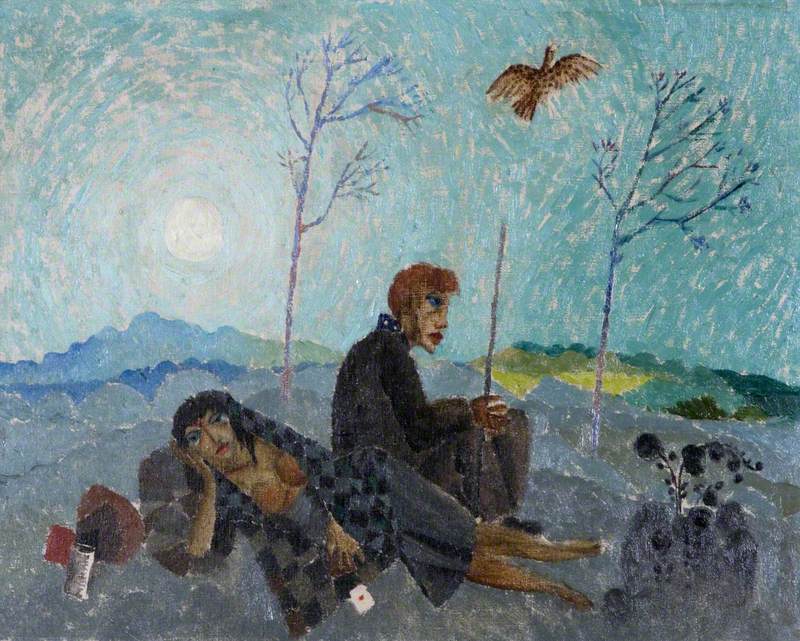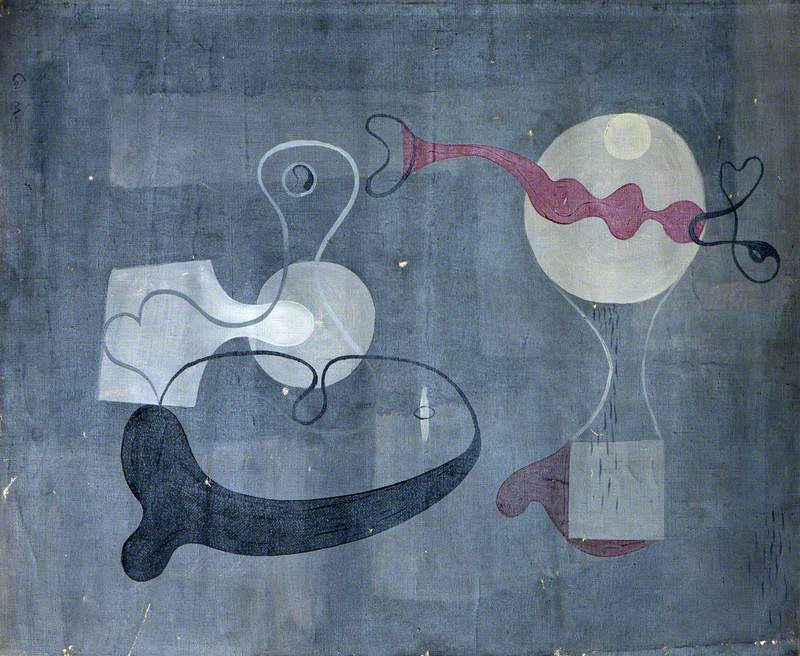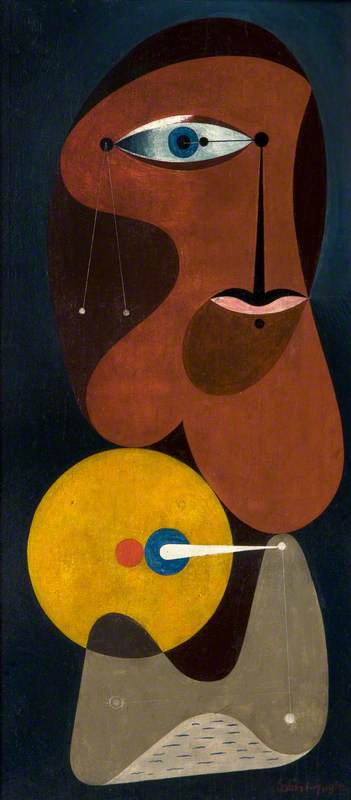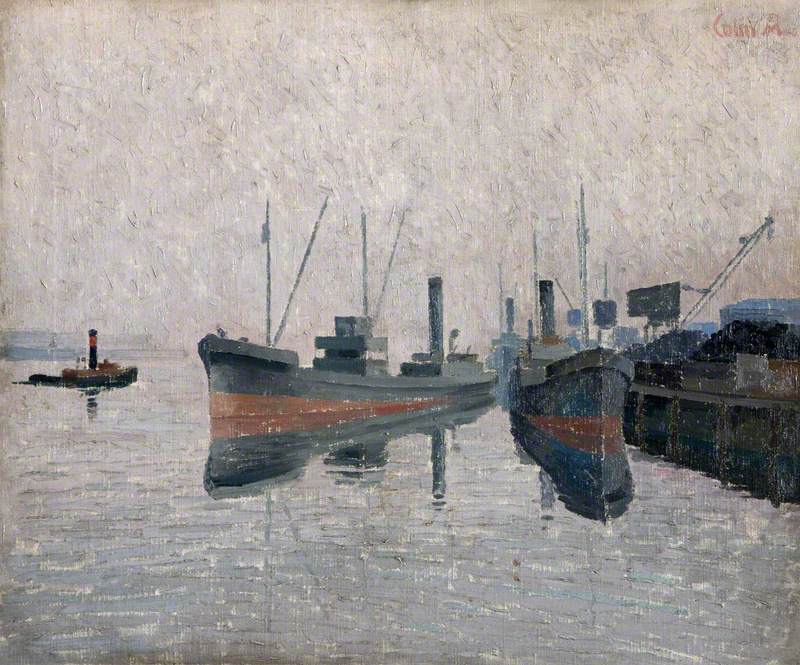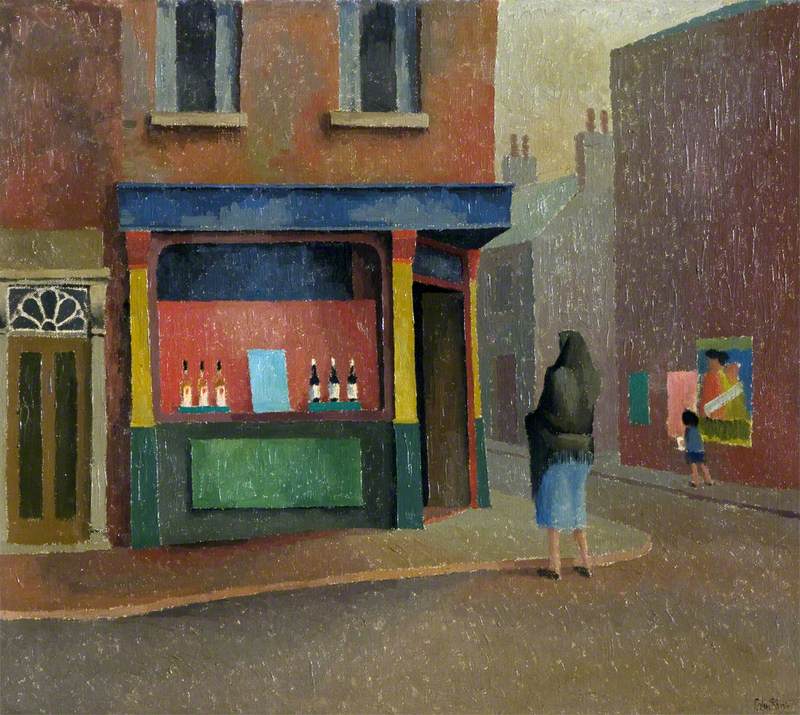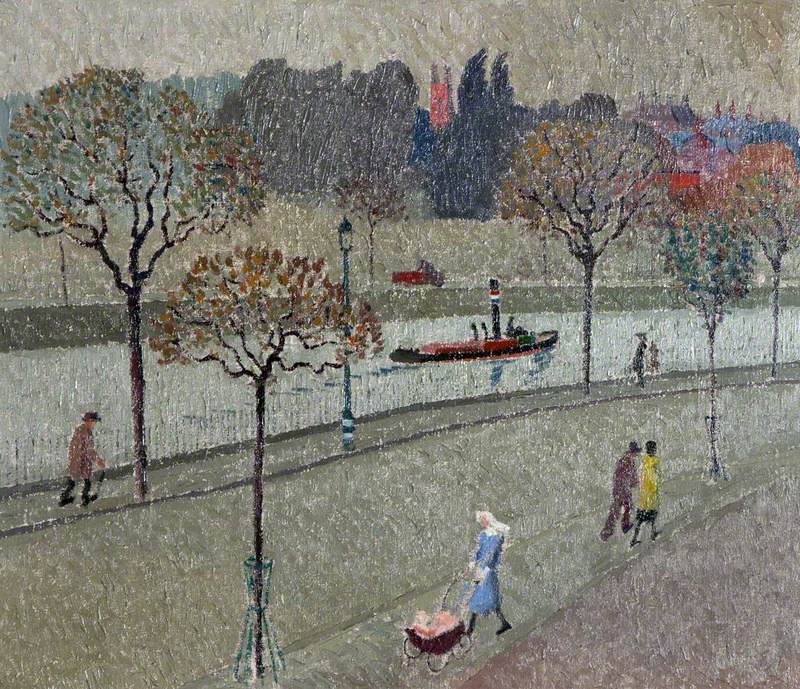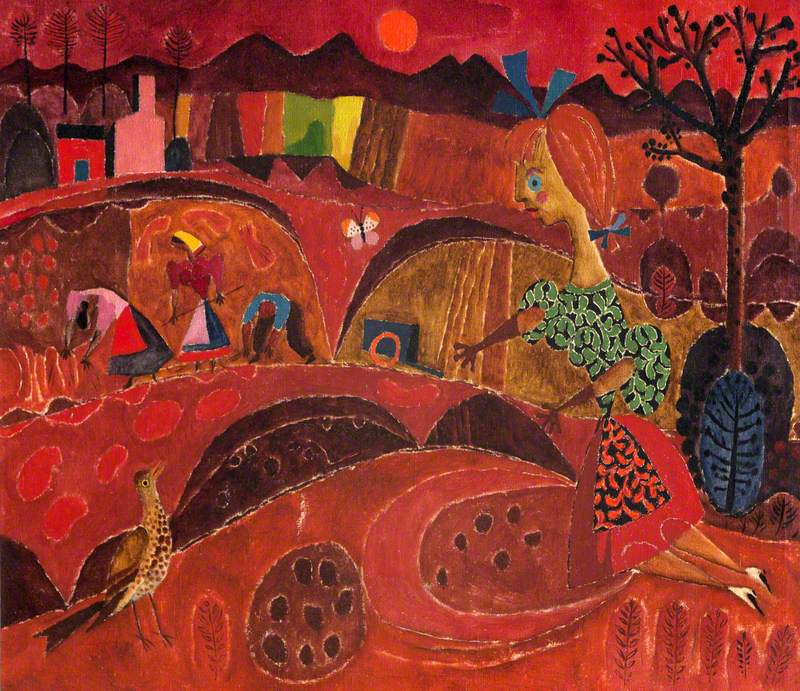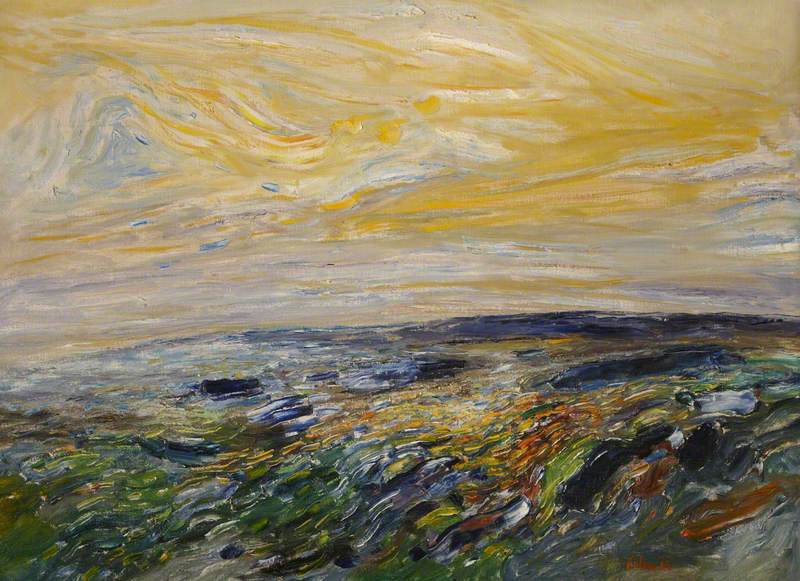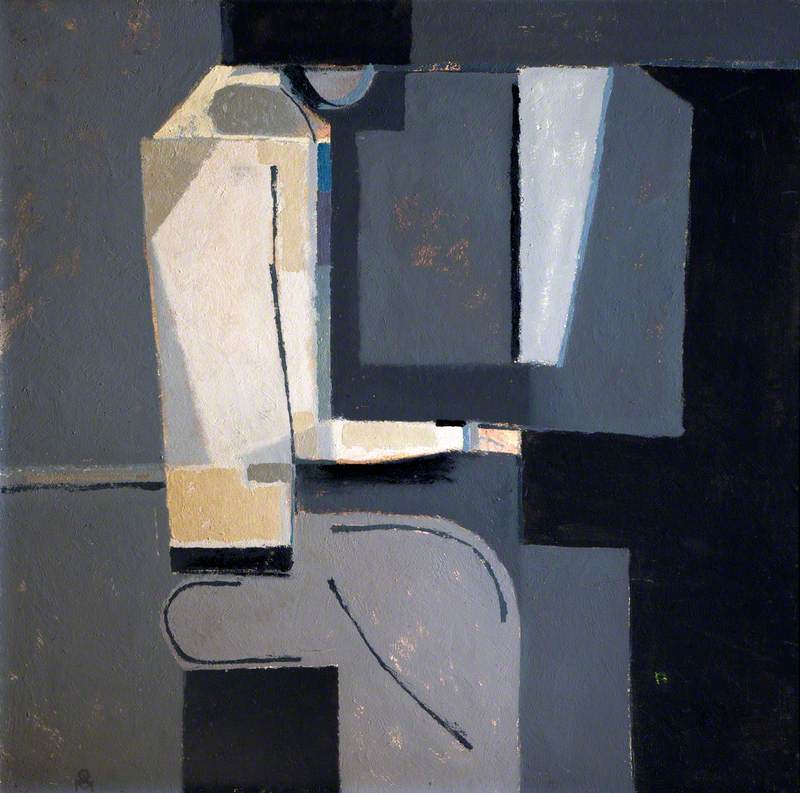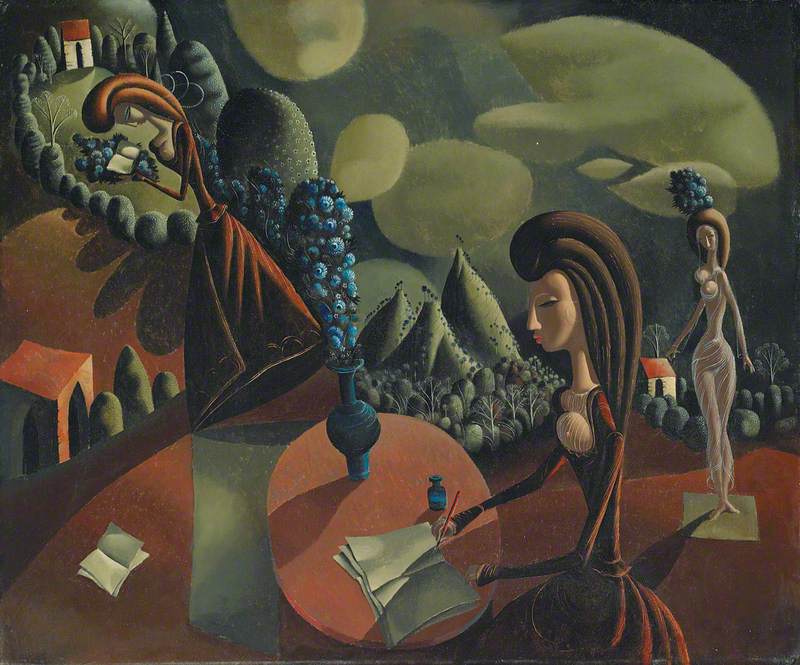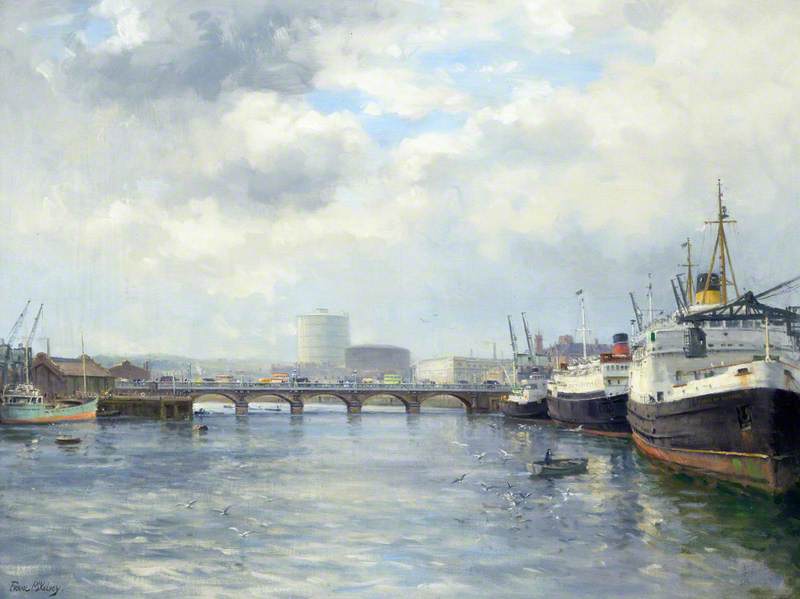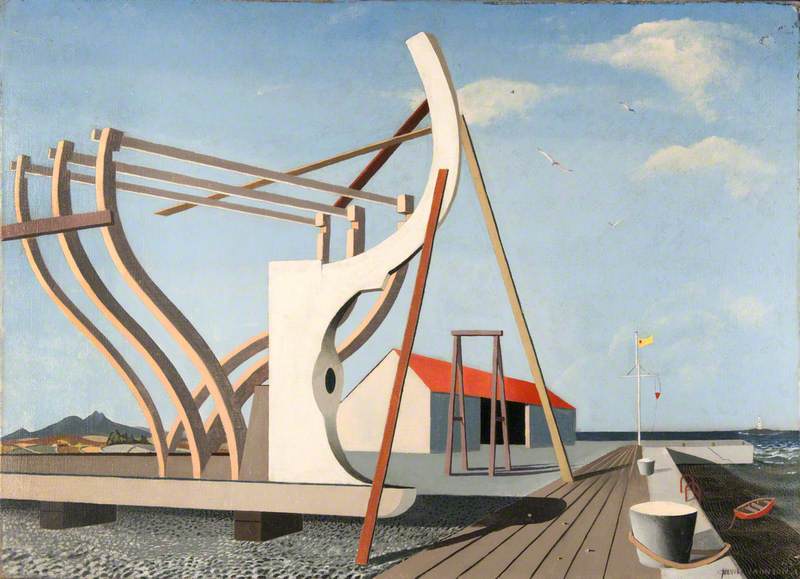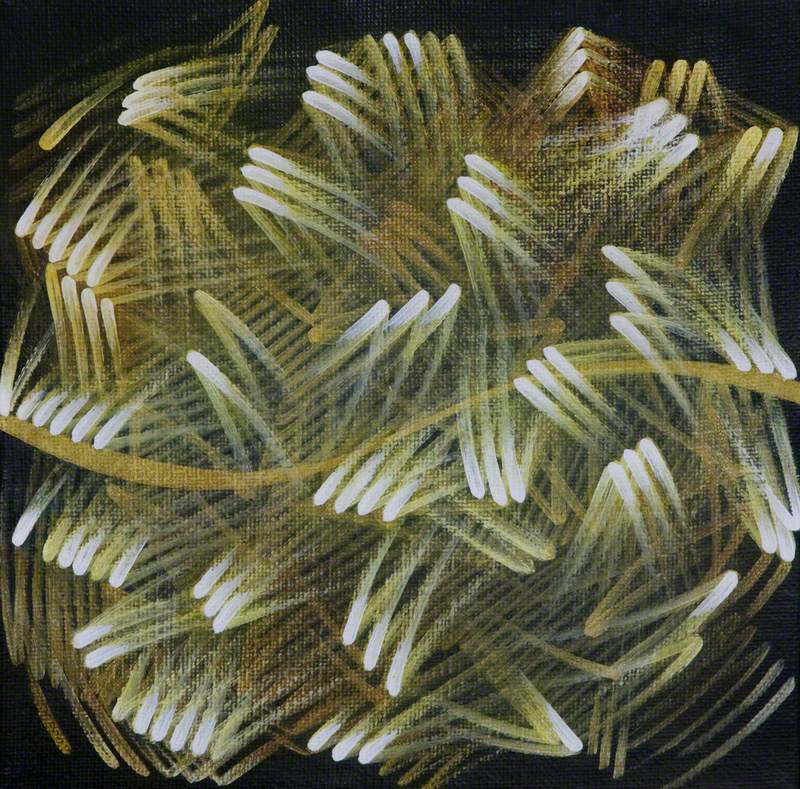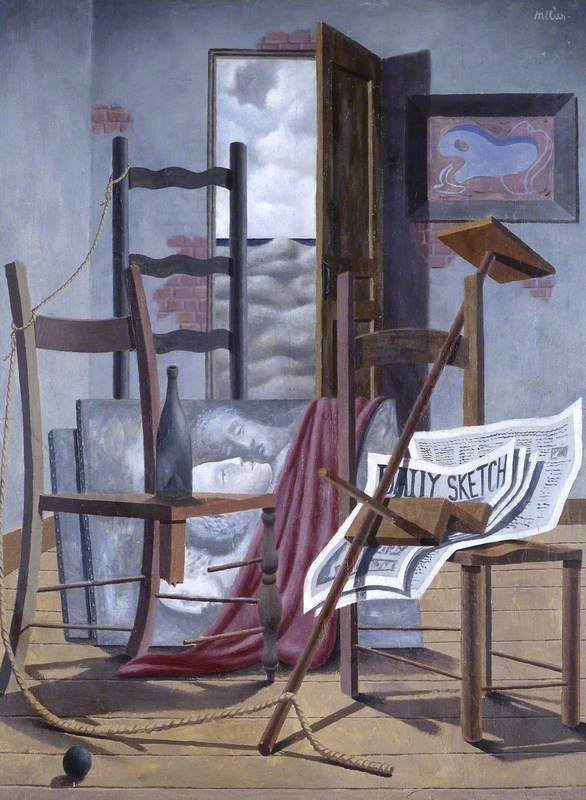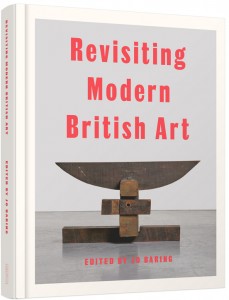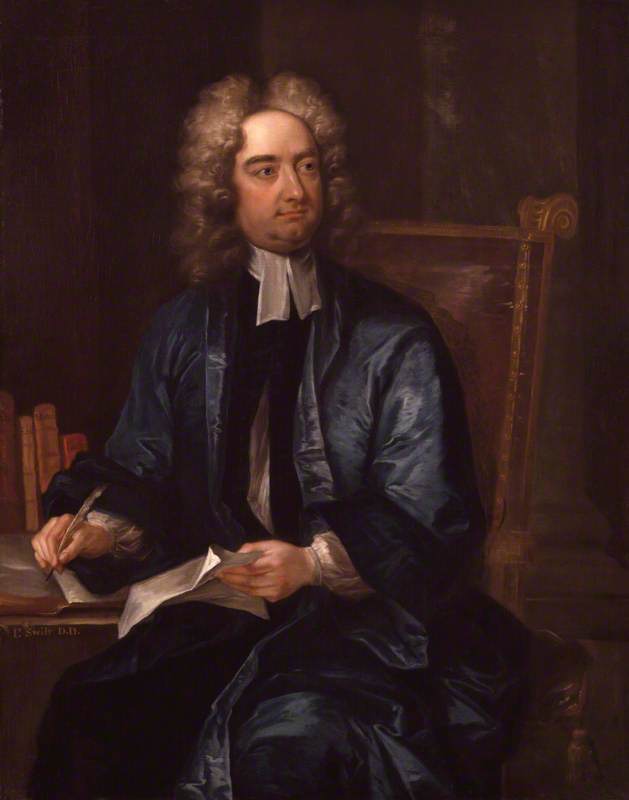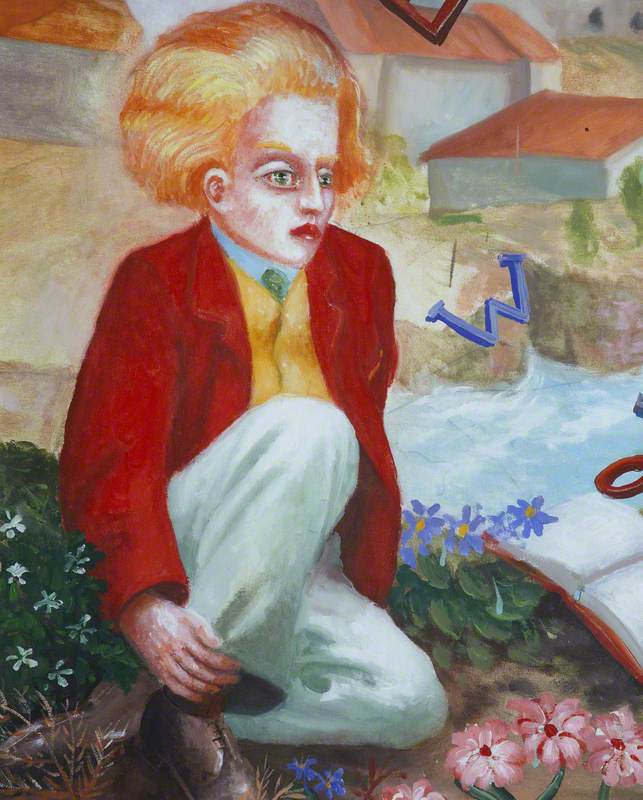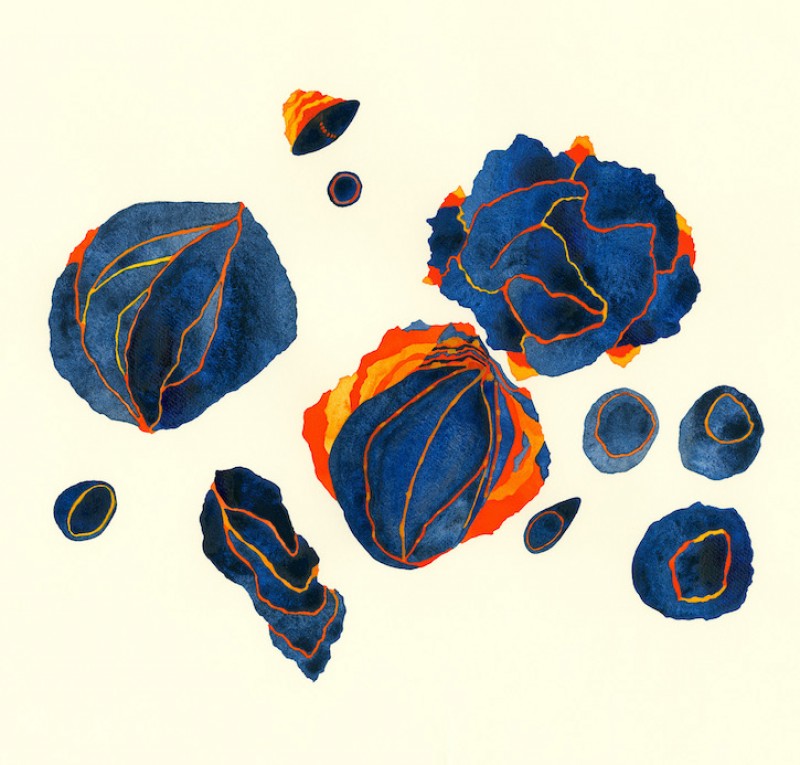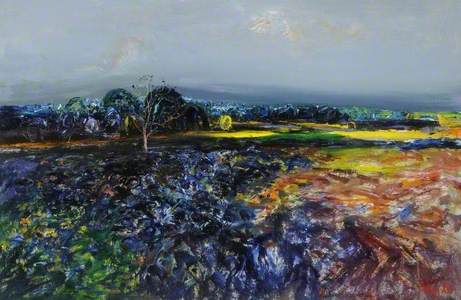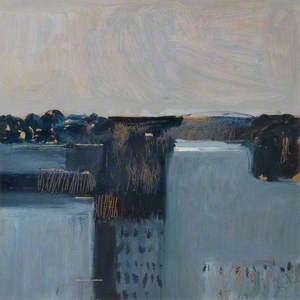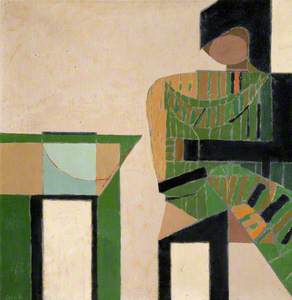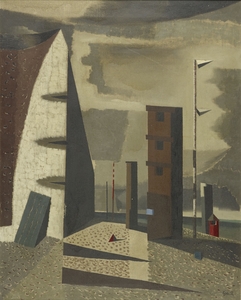'Colin Middleton: Among this Peace and Noise' (the subtitle is taken from a poem by the artist, Fare-well to Belfast) opened at the Ulster Museum on 29th September and continues until January 2024. It is drawn in part from the extensive collection of his work at National Museums NI, with a number of significant private loans (not all the paintings illustrated here are included in the exhibition). The exhibition takes place 80 years after Middleton's first one-person exhibition, which was held in the same room at what was then the Belfast Museum and Art Gallery, and 40 years after his death.
For much of his career, Colin Middleton was considered among the leading handful of painters working in Ireland, and his critical reputation has remained strong since his death. He has often been linked to certain groups of artists, or associated with near-contemporaries, from John Luke and Nevill Johnson, to Gerard Dillon, George Campbell and Daniel O'Neill, to Basil Blackshaw and T. P. Flanagan, yet he always remained independent, moving along his own path.
Middleton is an unusually complex artist. His output was prolific and he moved through a number of different styles, so bringing together a large group of his work from across his career can be visually confusing and might also create a sense that the artist's immense technical proficiency masked a lack of seriousness in the progress of his career.
In fact, Middleton's work has enormous coherence and a carefully considered development that, when given an appropriate biographical and historical context and an understanding of the relationship between different periods of his work, makes clear his engagement as an artist with the extraordinary events of his time, both locally and internationally, and with the politics of the period. Also evident is his expression of philosophical ideas and themes, and complex ideas about the identity and role of the artist.
The selection of work in the exhibition has been made to draw out themes and ideas that might provide a new and more precise understanding of Middleton's art, rather than to include paintings from every period of his work.
Middleton was born in 1910 in Belfast, which had undergone an extremely rapid and recent expansion to become the largest city in Ireland. Its industries, particularly shipbuilding and linen (Middleton and his father both worked as damask designers) had brought about a process of industrialisation and modernisation that had brought wealth and cultural progress to the city, as well as the problems that often accompanied extremely rapid expansion, such as overcrowding and poverty.
The exhibition explores the influence of the city on Colin Middleton. His role as a damask designer provided the opportunity to attend evening and weekend classes at Belfast College of Art, but the responsibility of taking on a partnership in the firm after his father's death in 1933 precluded him from studying in London, as he wished, or from more actively pursuing a career as a painter, particularly given the 'extreme modernist content' of his work. Yet, while he remained a part-time painter in Belfast, Middleton's remarkable 1938 painting Souvenir: Hastings, which expresses the threat of war and the dark mood of the time, is arguably one of the most significant works painted in Ireland that decade.
Widowed in 1939 after only four years of marriage, the outbreak of war only months later and the Blitz of Belfast in 1941 seem to have given Middleton a deep sense of empathy with the people around him, and he painted a series of cityscapes through the early years of the war that present Belfast and its people with familiarity and a quiet affection. Works such as Coal Quay, Early Morning, Lagan: Annadale, October and If I Were a Blackbird are significant painted records of the industrial city that, in general, avoid the stark images of bombed streets and industry, and present a more intimate vision of Belfast.
In parallel to these, Middleton was also creating striking images that demonstrate his awareness of Surrealism, but with an iconography that is related to his own life and often to certain visual aspects of the city around him. Middleton was ambivalent to Belfast's industrial power, and his own necessary employment as a designer for its largest industry was something about which he had equally complex attitudes. Strange Openings (c.1940–1942), from the collection of the Irish Museum of Modern Art, reflects this: the black factory windows might be a direct reference to windows painted for the black-out or covered with felt after the glass had been blown out in the Blitz, but the juxtaposition of the building with a terrace of houses appears to refer to what Middleton saw as the voracious and dehumanising nature of industry.
In a manner often closely related to Surrealism, Middleton deconstructed visual aspects of the physical city around him and incorporated them within paintings either out of context or in partial form, suggesting a breakdown in the order and power associated with urban structures, as well as his own relationship to his environment.
Much of the exhibition covers the period between 1933 and 1947, during which Middleton made his reputation as arguably the most avant-garde artist working in Belfast, leading up to a much-discussed first one-person exhibition at the Belfast Museum and Art Gallery in 1943.
Two Girls with Birds in a Red Landscape*
Colin Middleton (1910–1983) 
The 1943 exhibition had tracked Middleton's personal trauma and recovery from loss (he met his second wife, Kathleen, around 1942) as well as the shock and suffering that the war had caused in his immediate environment and across the world. It also explored the dichotomy between these two aspects that he saw in his creative personality, the designer and the artist. Clearly, these crossed over at many points, but the remarkable technical ability and craftsmanship of his work became, for Middleton, representative of skills that were not necessarily aligned with the most powerful expression of deep emotions and ideas that he sought in his work.
In 1947 he decided to leave Belfast and the linen industry behind to live and work at John Middleton Murry's community farm in Thelnetham. Middleton saw this as a turning point, hoping it would enable him to paint as much as possible, without the distractions of linen design. He also described, in letters to the poet and curator John Hewitt, his efforts to move from a highly finished, calligraphic style he associated with design, to a manner of working in which an expressive and direct handling of paint was key.
After a difficult year at Thelnetham, Middleton returned to Belfast and quickly began to paint in the expressionist manner he had gradually evolved. In the summer of 1948, he completed Teresa, a painting of a single female figure that Middleton identified with a particular area of Belfast, Carrick Hill, but in which he also embodied a powerful universal image of the female archetype. He described it as 'the simple mysticism – if one may dare so distinguish it – of the poor; the resigned: a state of awareness right on the threshold of the Kingdom of Heaven'.
The series of fluent and energetic expressionist canvases Middleton had completed in 1948 convinced the Dublin dealer Victor Waddington to take him on as a gallery artist, allowing Middleton the freedom to paint full-time. He left Belfast, first for Ardglass and then Bangor, before he and Waddington parted ways in the mid-1950s. Unable to find work as a linen designer, he took a position as a teacher, first in Coleraine and then as Head of Art at Friends School, Lisburn.
It was only in 1964 that Middleton returned to Belfast, living near Queen's University. By that stage, he was widely regarded as the leading painter in Northern Ireland. In the decade he lived at Camden Street he painted only a handful of subjects specifically drawn from the city, instead concentrating on works largely inspired by landscapes around Northern Ireland and Donegal that he visited regularly.
Crevinishaughey, Grey Morning, Co. Archdale
Colin Middleton (1910–1983) 
But Middleton had been gradually re-engaging with aspects of design since the late 1950s, at a point when he was aware he would not return to it as a career. Initially he was commissioned to paint murals and mosaics for a number of houses and other buildings, and the abstract language that emerged from these works began to transform his painting in the 1960s. One series of works that continued when he had returned to Camden Street was an increasingly abstracted formal treatment of Kathleen playing the piano, with the figure and instrument ultimately integrated into a single shape.
In the early 1970s, Middleton was able to give up teaching to paint full-time again, and the first part of that decade was dominated by travel, to Australia and then to Spain, before he left Belfast and settled in Bangor. But the dialectic that had shaped his development as an artist and his creative identity, between the designer and the painter, continued through the 1970s and perhaps reached some resolution in Middleton's work in the second half of the decade, in which the symbolism and narrative of his early work found expression in a manner of painting which contained at its heart aspects close to his design background.
These were the works that made up the 'Wilderness Series' and, subsequently, the 'Westerness Series', and their particular mood and technically complex and inventive style – visually ambiguous and mixing aspects of symbolism and surrealism with personal references and metaphysics – led to other related groups of paintings in the late 1970s. The female archetype remained central in these works, as it had throughout other periods.
For Middleton, each painting was part of the search for integration, and he compared it to an alchemical process for the artist and the viewer. In the catalogue for the exhibition where The Dream of the Moth was first shown, Middleton wrote 'Transmutation and Metamorphosis are the stuff of all poetry'; it is a statement which applies equally to many of his works in the 1930s, 1940s and beyond, and a reminder to look for the connections between his paintings across all periods, as one might find, for example, in The Poet's Garden and Dream of the Moth, painted 34 years apart.
Middleton is a unique figure within twentieth-century Irish art, arguably its greatest mid-century modernist. His work is well-known yet the depth, range and fecundity of his creative ambition still causes widespread confusion and misinterpretation. He will not be fully understood through a single theme or approach, but it might provide a template, as in this exhibition, for a more appropriate manner in which to approach him as an artist.
Dickon Hall, art historian and Art UK Content Commissioner, Northern Ireland
'Colin Middleton: Among this Peace and Noise', of which Dickon is co-curator, is showing at Ulster Museum in Belfast until 21st January 2024
This article was supported by Crossland Tankers
